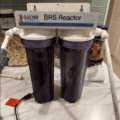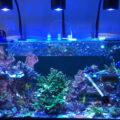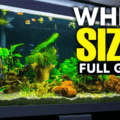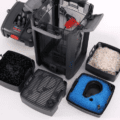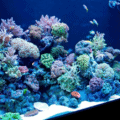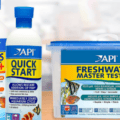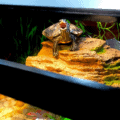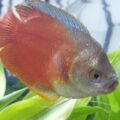Despite being small, nano reef tanks require as much care and maintenance as regular and large-sized aquariums. Here’s a detailed guide you must read before getting one for your space.
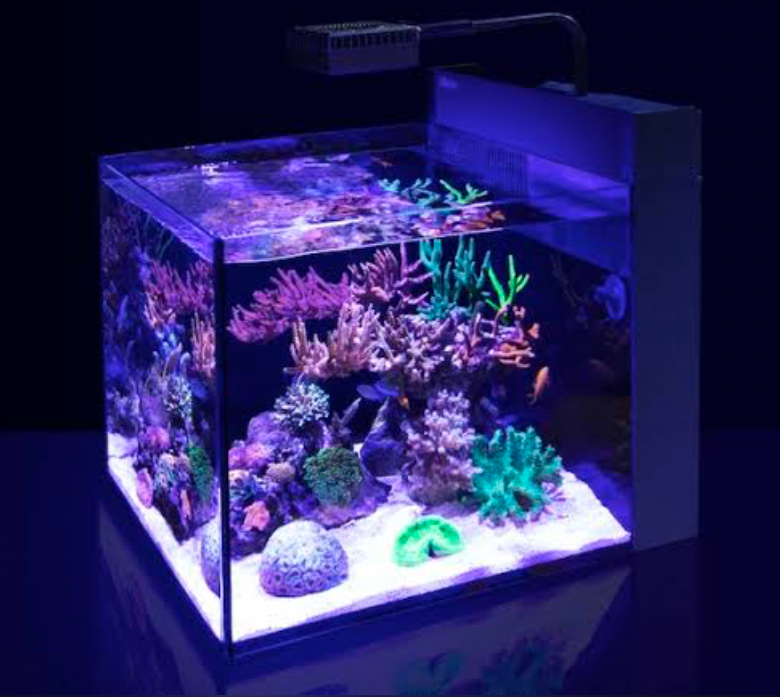
Introduction
Do you ever wonder about the difference between a small and a nano tank? If a small tank is meant for private aquariums, why should you go smaller?
This nano reef tank definition will help you understand the difference better.
Unlike average small tanks, nanos are a small saltwater aquarium setup with a maximum of 30 gallons of water. They’re ideal for reef hobbyists interested in decorative tanks.
Use the miniature reef tank basics upcoming in this guide to build your ideal personal nano aquarium.
Choosing the Right Tank: Size and Design Considerations
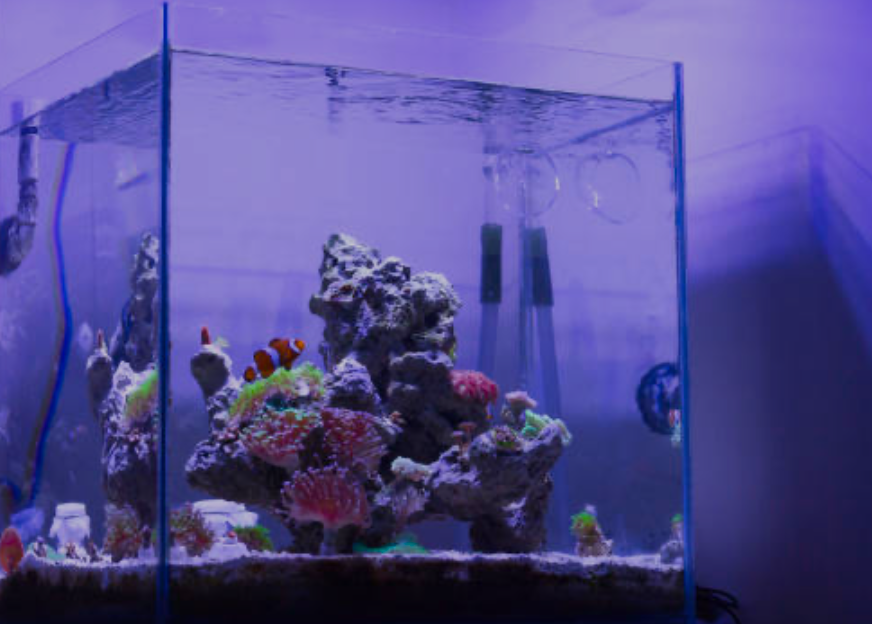
When choosing a compact saltwater aquarium, consider space, accessibility, and design.
The best nano reef tank size holds 15 to 30 gallons of water to house small and nano fish comfortably.
Because they come in different shapes, from all-in-one to cube, rimless, round, and square, you must consider how they fit in your available space.
Here are some reef tank design tips to help with space management and maintenance accessibility:
- Use fitted tanks in walls, desks, shelves, or any other furniture
- Use wall mounts
- Place your tank on a table
- Use modern maintenance tools like drainage pipes, breathable lids, and fish-in nets.
Author’s Note: Check out our post on A Cheat Sheet to Fish Tank Gallon Sizes and Dimensions for more on choosing the right tank size for your reef tank!
Essential Equipment for a Nano Reef Tank

To keep the ecosystem healthy, you need essential saltwater tank equipment like filtration, lighting, heater, powerhead, and ATO (auto top-off) systems.
These compact reef aquarium tools make maintenance easier because you can automate their functions and regulate their efficiency to ensure the safety of your pets.
Filtration and Water Movement: Keeping the System Stable
A nano reef tank filtration system should have moderate to gentle pressure that won’t stress or harm the tiny species inside. Select a high-quality brand and design that maintains water quality in small tanks.
Some top options include Hang-On-Back filters, internal media baskets, and protein skimmers. They boost reef aquarium water circulation while completing the nitrogen cycle and converting harmful, uneaten food to healthy nitrite.
Lighting Requirements for Coral Health
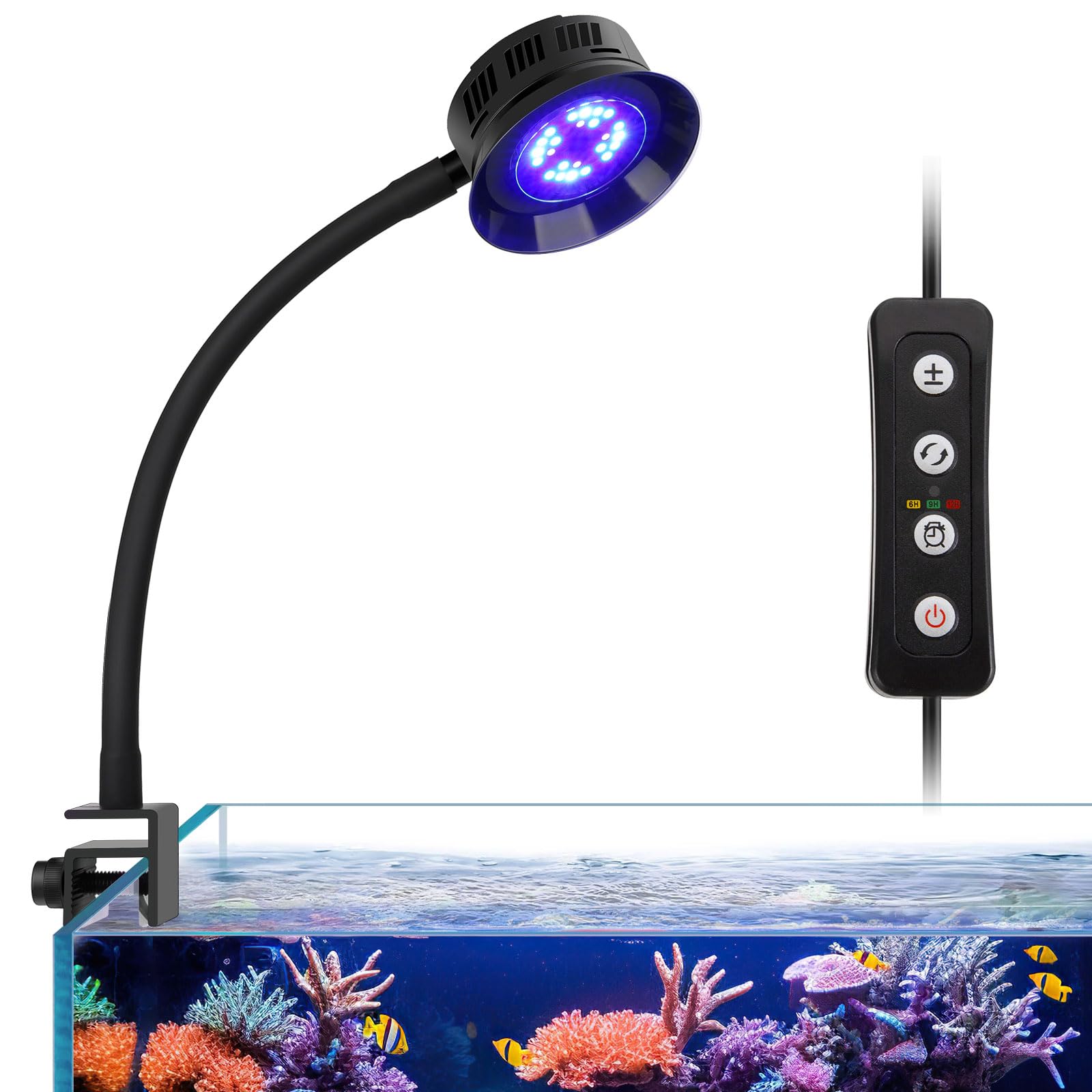
This reef LED lighting guide will help you choose a suitable lighting system for your nano reef tanks.
Choose multi-spectrum nano tank lighting for corals for the best results.
Lamps or strips with LED bulbs are coral-friendly nano lighting due to their regulated spectrum. Their intensity supports coral growth and coloration inside the tank without being harsh on your pets’ eyesight.
Selecting Substrate, Rock, and Aquascaping Layout
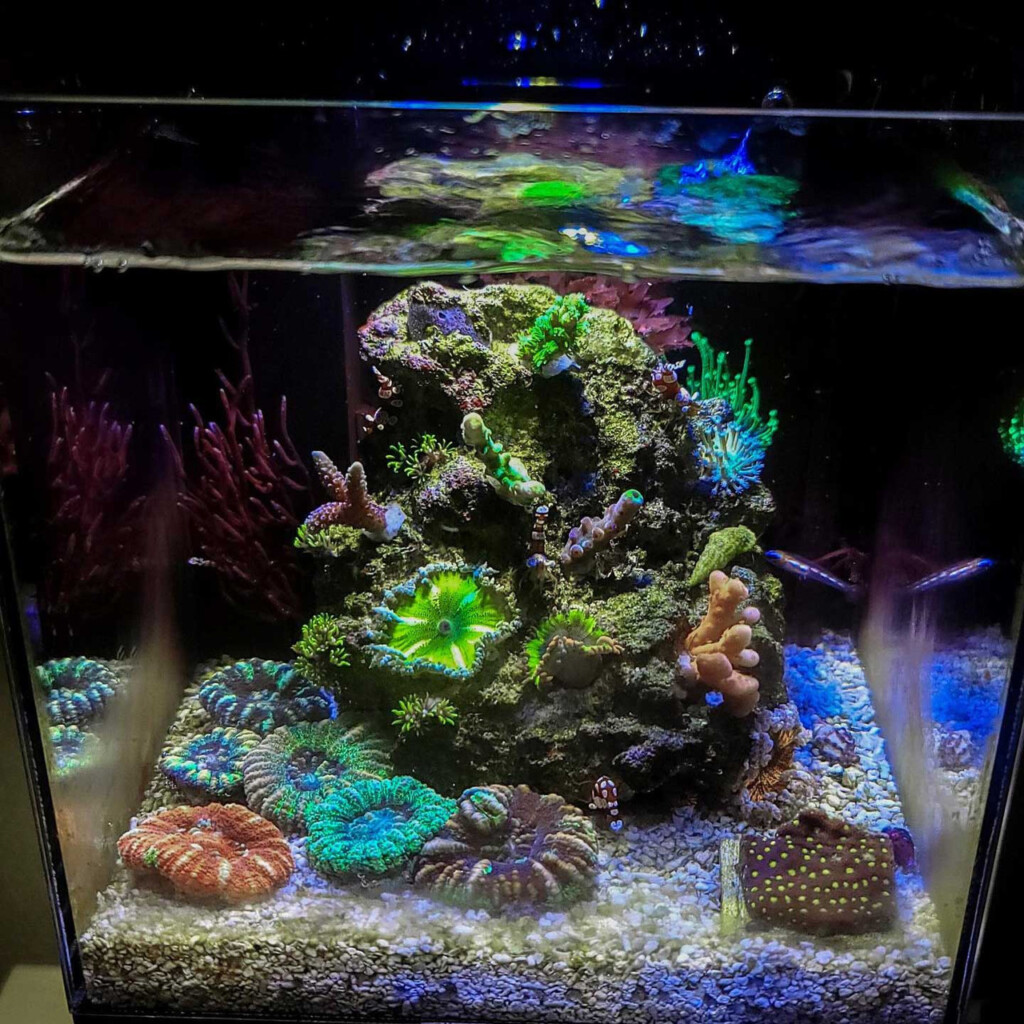
Whether your aquatic pets are bottom-dwellers or surface swimmers, these nano reef aquascape ideas will help you choose the safest and most aesthetically pleasing substrates for your tank.
Your small reef tank substrate choice depends on the species living there and how well you want water to flow.
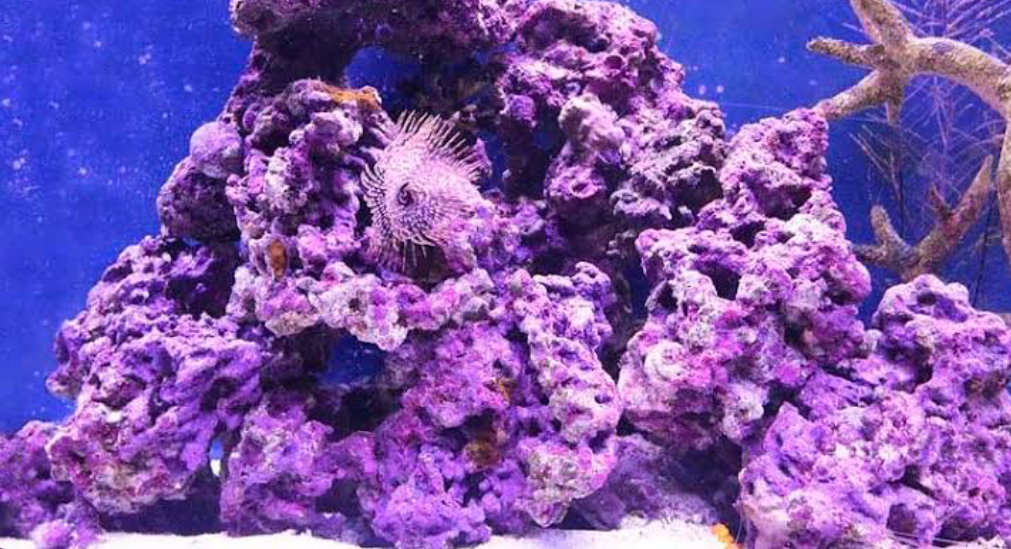
Because live rock for nano tanks encourages organism growth, you must decide between a cured, cycled, or uncured product. Cured products are the best for non-algae-eating species; you can get them from online stores.
Some top options include ARC reef rock, Marco rock, Fiji rock, Tonga rock, and Base rock as an alternative. Typically, rocks get their names from their natural habitat regions. So, note that.
Now, let’s discuss the means of maintaining water quality.
Water Parameters and Testing: Maintaining Stability in Small Volumes
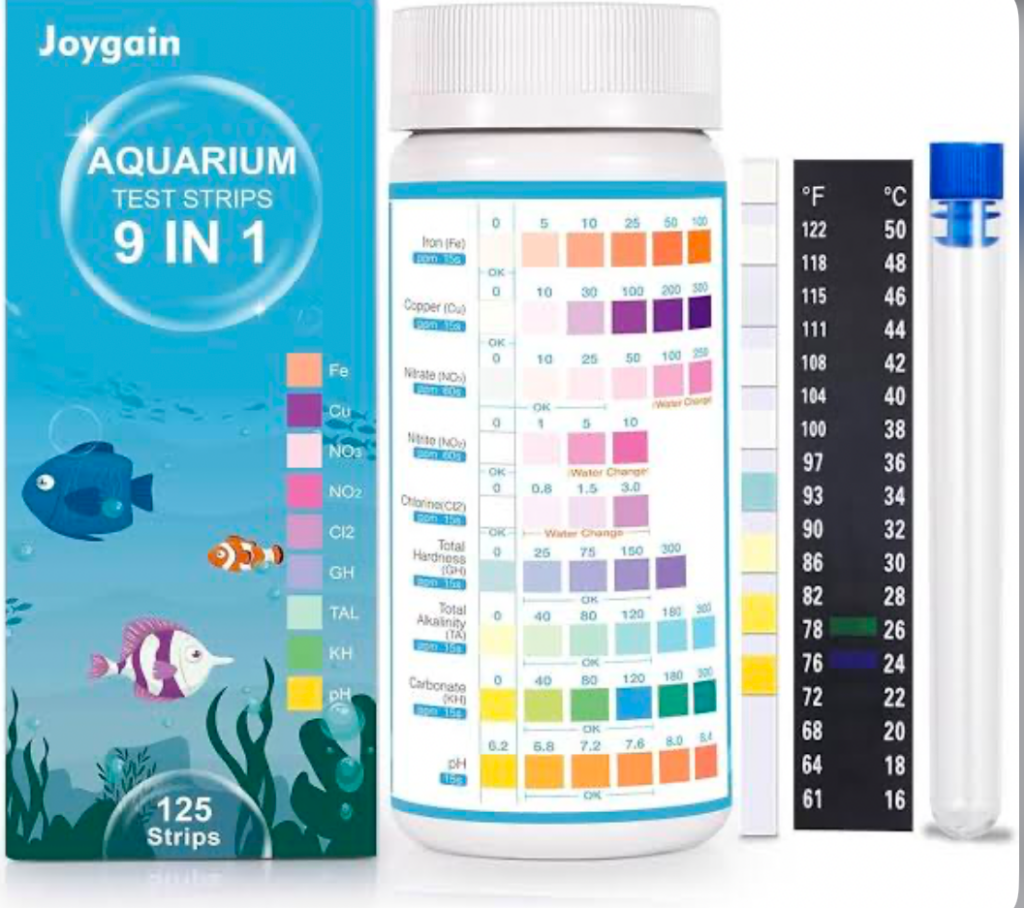
The following are critical nano reef tank water parameters:
| Salinity |
| pH Balance |
| Temperature |
| Nitrate |
| Calcium |
| Alkalinity |
Use an automated system to ensure stable conditions in nano tanks instead of stressing yourself with constant checks.
However, that shouldn’t stop you from frequent saltwater aquarium testing and minor adjustments for your pets’ comfort.
Now that we’re done designing an ideal nano reef tank let’s choose the aquatic species to live here.
Best Corals and Invertebrates for Nano Reef Tanks
For an in-depth list that highlights beginner-friendly corals for tanks of all sizes check out our post on the 21 Live Saltwater Aquarium Plants for Your Aquascape.
These coral species, listed below, are suitable for small tank systems due to their sizes and growth needs
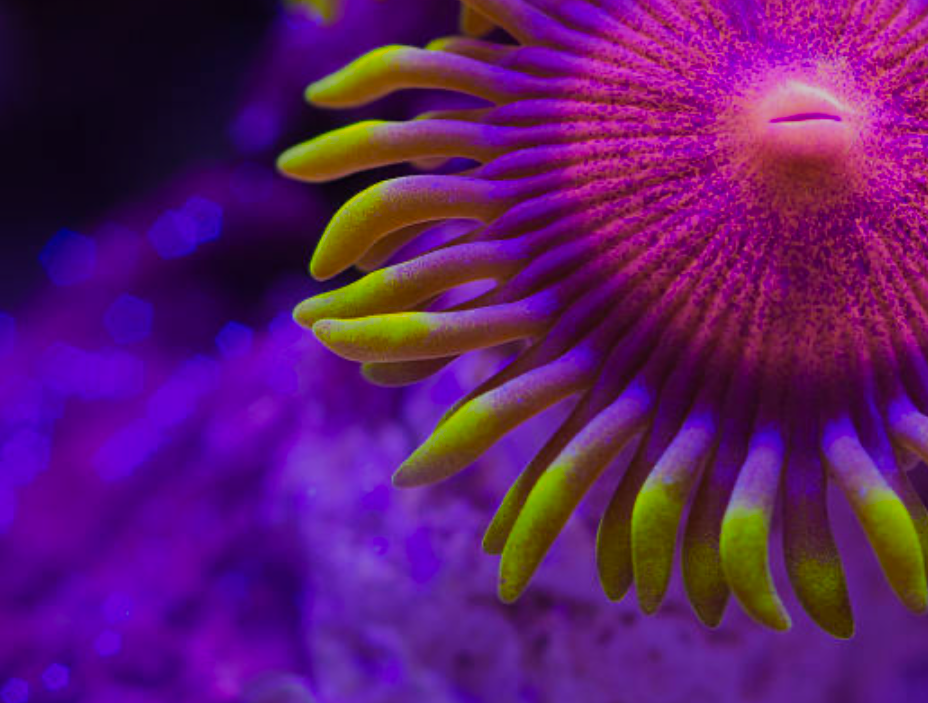

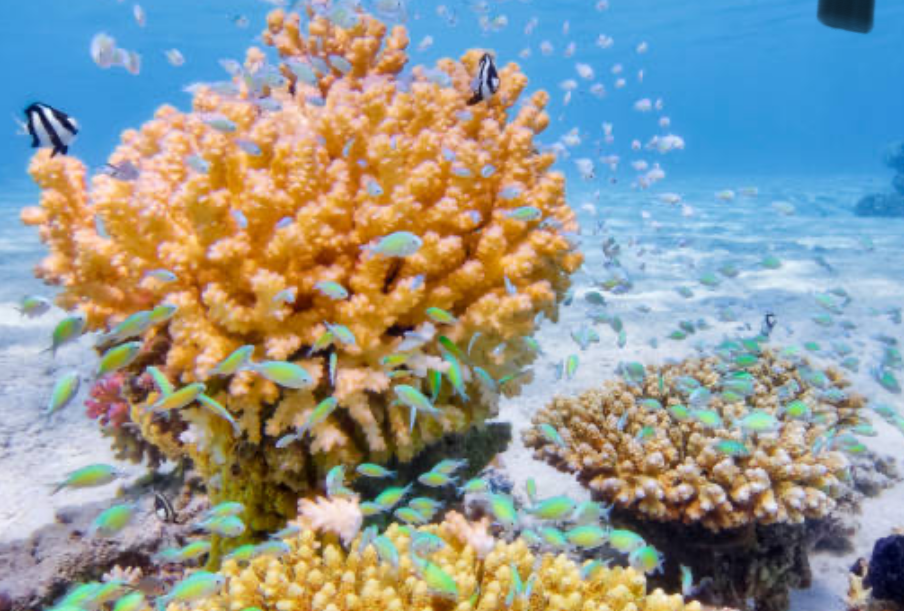
Next up is compatible nano reef invertebrate selection from species like shrimp, snails, and crabs. Besides their beauty, their dietary preferences for algae support cleanliness in the tank.
Now, let’s choose low-maintenance reef livestock to complete our setup.
Fish Selection for Nano Reef Aquariums
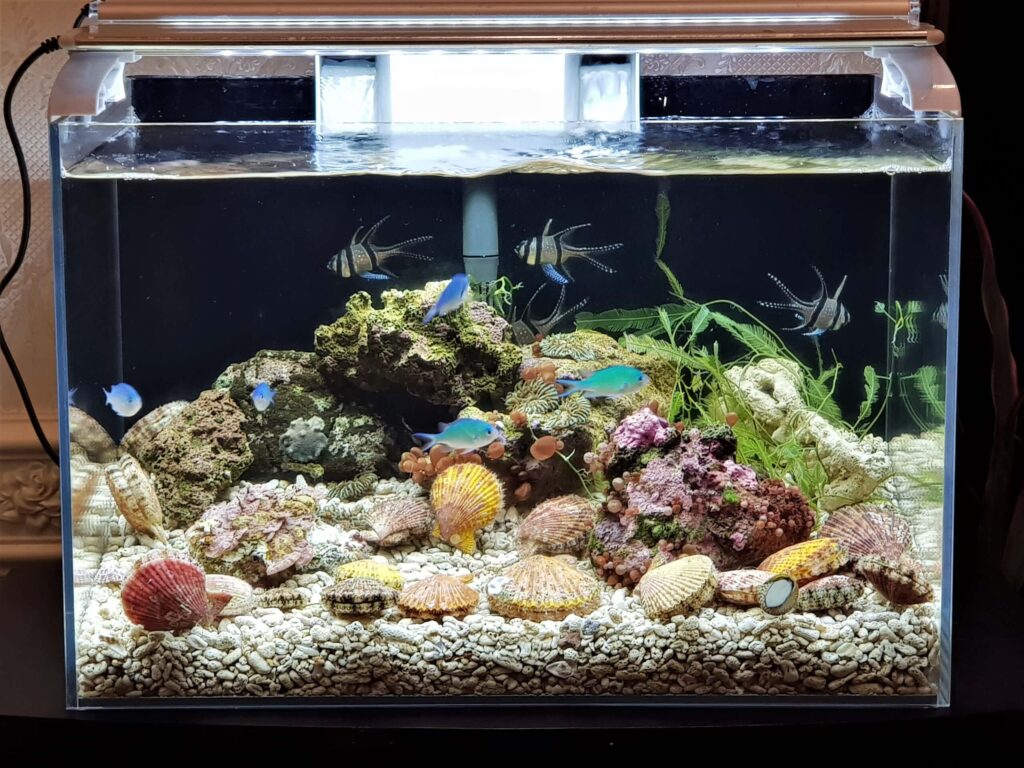
The best fish for nano aquariums are peaceful, small, and interactive species like clownfish, gobies, and firefish. You can also choose from other common small saltwater fish species like Cardinalfish, Royal gramma, and Chromis.
Limit stocking to no more than five nano fish or three small fish to keep the water conditions stable and avoid overloading the tank.
Author’s Note: Checkout our post on 14 of the most colorful saltwater aquarium fish in existence for even more great marine pet choices.
You’re almost at the end of this nano reef fish guide. So, keep reading a little longer.
Maintenance Routine: Small Tank, Big Responsibility
This reef aquarium upkeep guide helps you maintain your tank for as long as possible.
Monitor your saltwater tank care schedule with a checklist for weekly and monthly tasks, including top-offs, water changes, algae control, equipment checks, and coral observation.
A proper nano reef tank maintenance ensures durability such that you can use one coral aquarium for multiple species lifecycles.
Common Mistakes to Avoid with Nano Reef Tanks
Watch out for these common saltwater beginner mistakes:
- Overfeeding your pets or corals
- Rapid livestock additions
- Skipping tests
- Ignoring signs like evaporation
With patience and precision, you can handle basic nano reef tank troubleshooting without needing a professional. Immediately identify the problem, then correct the error.
Fast your fish or invertebrates to cure overfeeding, reduce livestock presence for overcrowding, consistently test the water for optimal conditions, and address signs of abnormality.
Scroll up to see details on tips for avoiding nano aquarium issues, from choosing the right size to adding essential tools for optimization.
Conclusion
You can now agree that nano reef tank success is possible with precision and patience. New and established aquarists looking for personalized tanks will appreciate this design for its compact size, manageable budget, and visual impact.
This mini marine aquarium guide shows you how to keep these ecosystem thriving without breaking the bank. It includes organic methods for compact reef aquarium care using coral-eating organisms and automated tools.
Try these tips, and let us know how they helped you in the comment box below.

